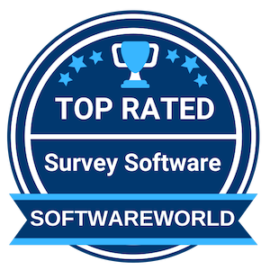What is the best time to run surveys in your organization?

Timing is everything. Not just in movies but everywhere.
An employee survey is a powerful tool for employers and management. Transforming the company culture and enhancing employee experience is now taking the centre stage in the business world. The only way to nurture a good organizational culture is adapting with the rapid changes and constantly improving it. And like they say, the first step to improvement is measurement.
If you conduct employee surveys effectively it can do wonders for your organization. It can give you deep insights about the culture, track improvement and reveal problem areas of an organization. Focusing on the right area makes the surveys much more efficient, so it’s vital for you to know how to create a survey.
But it is equally crucial to tap the insights from your employees in the right time and right manner.
To get the timing right, here are 5 important factors that you should consider before circulating an Employee Survey:
1. Purpose of the Survey
Every employee survey should have a well defined and specific purpose. When you establish the purpose, it will help you in narrowing down the best time when the particular survey will be able to gauge most honest and meaningful responses. For example, you may wish to run the survey to track employee engagement, learn about the work environment, ask about the onboarding process and so on. If you want to make changes to the work environment, running a survey 2-3 weeks ahead of planning to understand your employees’ needs and preferences would be a great idea.
Related: Top 10+ Survey Software In 2020

2. The types of Survey
Traditionally employee surveys are run once in two years or annually. These are long-form surveys that consist of over 50 Questions from all areas of the organization. Annual or Bi-annual surveys are circulated towards the end of the year. Although this particular form of survey offers some useful insights there is often a huge gap in the timeline between employee needs and action by the management.
Presently most employee surveys are pulse surveys. These are short-form, frequent and fast surveys that typically ask targeted questions to uncover specific company concerns. As the name suggests, pulse surveys try to grab the pulse of the workplace.
There is no right time for running pulse surveys, they should be run frequently typically once a week, to keep a continuous check on your employees attitude.
A combination of an annual long-form survey and frequent pulse survey can give the best results.
3. The Key junctures in Employee Lifecycle
Apart from running regular and annual surveys, there are certain stages in the employee lifecycle where a survey can give you insightful and extremely important information about the company and its culture.
Four most important junctures are:
- Employee Onboarding: New employees in the workplace are like new kids in school. They are nervous, excited and full of positive energy. They naturally have high expectations from the employer and the company. When you run a survey among them they bring a fresh perspective to the table. Their outlook reflects how the company is perceived on the outside of the organization. Their answers can also act like baseline data to track their engagement and commitment to the company in the long run.
- Work Anniversaries: Another important point in the employee journey that you can’t miss out on is the work anniversaries. Work anniversaries are significant milestones for your employees, they are the equivalent of birthdays in our personal lives. When employees cross the threshold of a year in the organization they get a well-rounded idea about the strengths and weak points. They gain a deeper understanding of the company goals and values, the work environment and the overall culture of the company. Also, work anniversaries are a great opportunity to understand what makes employees stay in the company. So next time you have a work anniversary coming up, make sure to conduct a survey.
- Employee Review Processes: Next thing that I like to mention is posting an employee review. Every organization has its own employee review processes and most often than not these are hard to get right. Feedback is crucial in performance management, both from the employer and employees. Once the review process is over, employees should be asked to answer a set of questions regarding the process. Employees can either be happy about a promotion or appraisal or they may feel that their promotion was long overdue. Either way, the responses will give a good idea about the effectiveness of your performance management structure. It will throw the light of possible shortcomings and help in further improving the evaluation process.
- Exit Interviews: Letting good employees go is hard for any organization. Often an employee’s decision to leave a company is due to multiple reasons. While some reasons are inevitable, most of the time the reasons are avoidable. Instead of turning your back on your outgoing employees, you should try to understand the factors that led to this. Although it might sound unnecessary, these surveys often are good sources to uncover lesser-known problems in the company. It can add value immensely to your employee retention strategies.
4. Understanding employee psychology
At different times of the year your employees’ psychology will differ and they might have different responses to the questions asked in the survey. As much as possible avoid running a survey during these touch-points. If they are too stressed at a certain point maybe before big project launch, it's probably not the best time to collect responses. Similarly, if they are too relaxed and overjoyed maybe after an office team party, it is again not a great time to seek answers. The reason is simple, the purpose of running a survey is to gather honest and actionable responses that can be helpful in the betterment of the organization. You don’t want to collect too harsh or too satisfied responses just for the sake of it.
5. Outcomes and Action Plan
The final and most important when it comes to circulating a survey is having an action plan in hand. The management should only run a survey when they are willing and absolutely committed to acting on the results. Simply running a survey or collecting responses is not enough. Keep note that the time period between running a survey and taking a necessary action should be minimum. This is crucial to make the most of the survey process.
Final Words
Running well-designed employee surveys is a scientific way to gauge employee engagement and employee satisfaction. Being mindful about what you are asking, how you are asking and when you’re asking can be detrimental to the success of the survey. Additionally, try to keep the survey questions simple, short and anonymous. The survey shouldn’t cause fatigue among employees. The above are a few suggestions from my personal experiences, feel free to share your thoughts on the comment section below.
Featured image by pch.vector on Freepik
